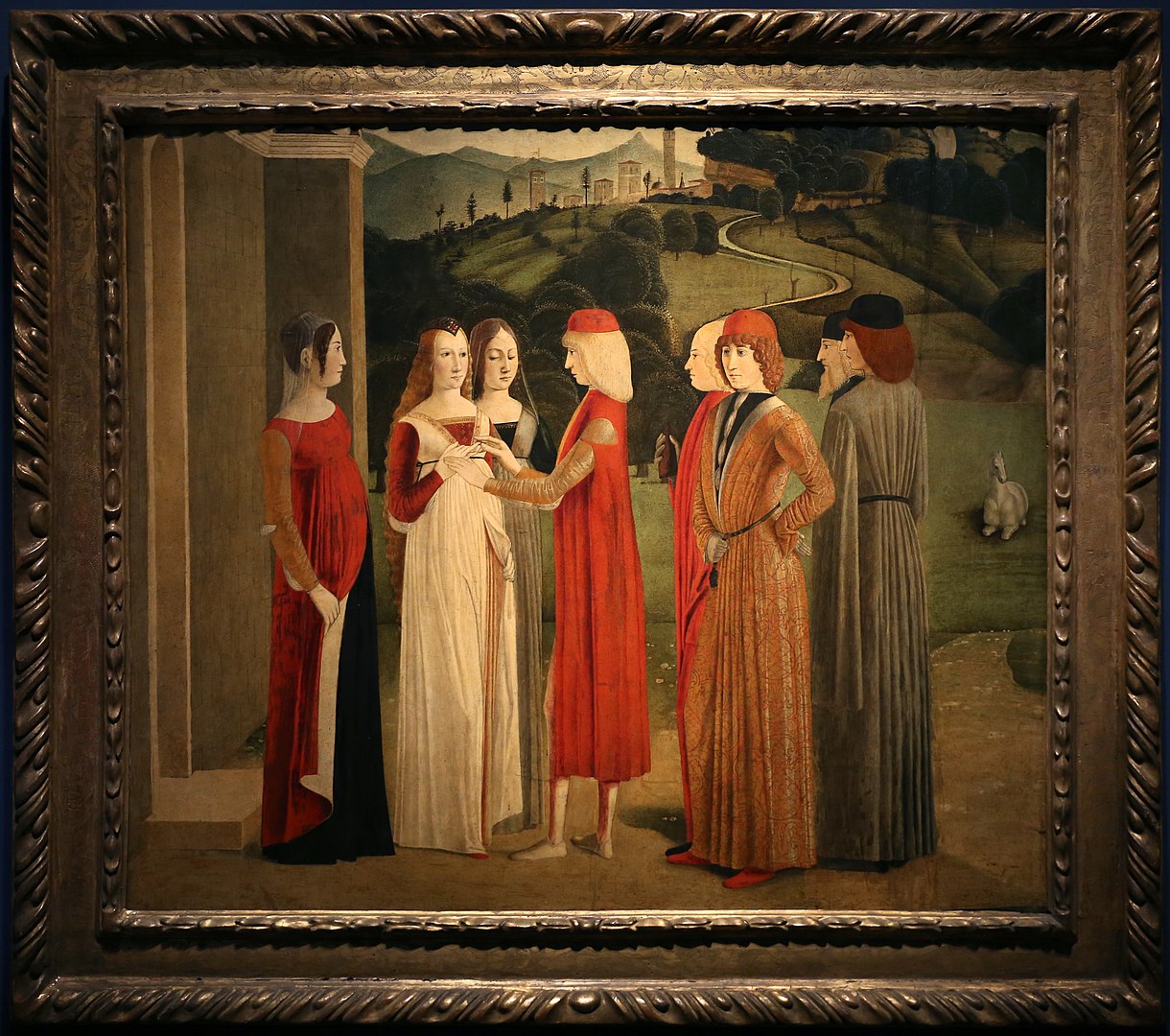
By Sailko – Own work, CC BY 3.0,
https://commons.wikimedia.org/w/index.php?curid=89005929
The Giving of the Ring or An Engagement was painted by Michele da Verona. The painting is dated 1495-1500. It is currently housed at Berlin, picture gallery (“Berliner Wunder”), foyer.
This figure from the far left of the painting clearly shows the wide oval neckline with a gently curved and slightly flattened bosom typical of the early 1490s. Her sleeves appear to either be fully laced in or sewn in. This is a good example of how a dress of this style can be made to work in within the context of an SCA event. This dress has a sidewise vented sleeve that vents at the back of the forearm and the elbow and is most likely a single piece that is slashed and faced to create the vents. This vent allows for full motion of the elbow joint without adding additional curvature or fabric to the sleeve. The red overdress closes all the way up the front of the bodice without visible closures and completely covers the bodice of the black dress underneath it. The black dress is visible when she lifts the split front skirt of the red overdress. Her hair is up in a flattened bun surrounded by a band, probably indicating her married status. She wears a sheer veil over this with a shaped front that comes to a point over her forehead.


The central woman in this painting– the bride-to-be– is seen with her red underdress showing at the bodice under a white overdress that has a deep V-neck that dives all the way to the raised waistline. The waistline is encircled by a cord belt, tied to the side. Her sleeves are also vented just above the elbow down to the wrist where the sleeve closes again. With the tightness of the sleeve, there would need to be a closure of some sort at the wrist of the sleeve. This ensemble has trim at both the neckline of the red underdress and then the deep V-neck of the white overdress. You can barely see the body linen peeking out above the red underdress’s bodice edge. This early 1490s style of body linen has no pleating at the neck and more closely conforms to the body of the wearer in a style more closely related to that of a T-tunic. The sleeve of the body linen has a slight bit of volume showing at the elbow vent. This figure wears a ‘Juliet Cap’ ornamented with pearls and what is either carnelian or possibly ruby. Her hair is unbound under the ‘Juliet Cap’, most possibly indicating her unmarried status.
The final female figure in this painting stands behind the bride-to-be and wears almost an identical outfit to the bride-to-be. The most noteworthy difference in her outfit is the trim at the apex of her shoulder on the overdress. Her hair is also unbound indicating her unmarried status. Her veil comes to a point at the forehead like the ‘Juliet Cap’ on the bride-to-be.
